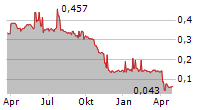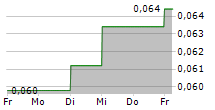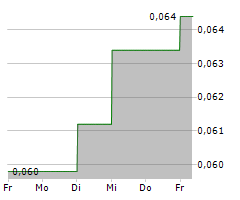
Pancreatic cancer remains difficult to diagnose accurately using conventional methods often leading to late-stage diagnoses or unnecessary surgeries
New publications confirm once more Cellvizio's far superior ability to accurately classify the risk of pancreatic cystic lesions with 98% sensitivity and accuracy, surpassing conventional methods
Regulatory News:
Mauna Kea Technologies (Euronext Growth: ALMKT), inventor of Cellvizio®, the multidisciplinary probe and needle-based confocal laser endomicroscopy (p/nCLE) platform, today announces a new body of evidence supporting the use of Cellvizio® for the classification and risk stratification of pancreatic cystic lesions (PCLs), presented at the Digestive Disease Week® (DDW) 2024 Conference held in Washington, DC.
Conventional diagnostic testing of PCLs which involves performing an endoscopic ultrasound (EUS) and then collecting and testing the cyst fluid through fine needle aspiration (FNA) is considered as suboptimal at accurately diagnosing and risk stratifying PCLs. Cellvizio® can be added to EUS as an adjunct via the existing FNA needle ("EUS-nCLE"), providing real-time imaging of the cyst characteristics and aiding in appropriately gauging the potential risk posed by the cyst prior to any surgical intervention.
In one publication1 pooling two separate studies with a combined sample size of 420 patients, the sensitivity and diagnostic accuracy of EUS-nCLE for classifying mucinous vs. non-mucinous PCLs was 98% and 97%, respectively, compared to 74% and 81% for fluid analysis (CEA) cytology, 77% and 80% for CEA cytology glucose, and 76% and 86% for next generation sequencing (NGS), respectively. This sharp positive increase in sensitivity and accuracy with Cellvizio (EUS-nCLE) would translate to a marked reduction in late-stage diagnoses of advanced pancreatic cancer and unnecessary surgeries on benign or low-grade lesions, totaling as many as 2,000 unnecessary surgeries per year in the United States2
In a second publication3 evaluating data from 65 patients enrolled in a multi-year study, EUS-nCLE demonstrated high accuracy in preoperatively predicting dysplasia in branch duct intraductal papillary mucinous neoplasms (BD-IPMNs), with high interobserver agreement of 0.711.
A third publication4, using the same patient data, concluded that improved preoperative accuracy can be achieved by incorporating nCLE in the preoperative risk stratification of BD-IPMNs, improving the decision criteria for evaluating a patient's candidacy for surgery, and ultimately improving patient management.
"The combination of these publications and presentations from DDW underscore, once again, the critical role Cellvizio can play as a key adjunct to the tools physicians use to diagnose and manage pancreatic cysts," said Sacha Loiseau, Ph.D., Chairman and Chief Executive Officer of Mauna Kea Technologies. "Pancreatic cancer remains one of the more elusive cancers, often termed the 'silent killer' because of its lack of symptoms and discovery by incidental imaging. Obtaining an accurate diagnosis is critical to ensure only patients who need surgery receive it, and to ensure the correct risk stratification of malignant cysts. This new corpus of data confirms that there is no combination of techniques which is superior to direct microscopic observation of the pancreatic cystic lesion in real time with Cellvizio. We are confident that with all the confirmatory positive data and the growing support from many experts around the world, nCLE with Cellvizio is fast approaching its prime time and the status of standard of care, thus creating a very significant market opportunity for Mauna Kea.
About Pancreatic Cysts
The prevalence of pancreatic cystic lesions in the adult asymptomatic population ranges from 2.4% to 24.3%5. With the large majority of pancreatic cystic lesions being discovered through incidental imaging and an estimated 40% of surgeries being performed unnecessarily on benign or low-grade dysplasia lesion patients, there is a need for more accurate classification methods, including risk stratification, earlier in the patient's diagnostic workup. Conventional diagnostic testing involves performing an endoscopic ultrasound (EUS) and then collecting and testing the cyst fluid through fine needle aspiration (FNA). In some advanced facilities, next generation sequencing (NGS) may be performed to provide additional data. The gold standard remains resection of suspicious tissue, often introducing complications such as chronic pancreatitis, even if the cyst is benign. Although most facilities employ a combination of a range of conventional diagnostic methods, sensitivity, specificity, and accuracy remain critically low, potentially exposing patients to unneeded surgical procedures.
About Digestive Disease Week®
Digestive Disease Week® (DDW) is the largest international gathering of physicians, researchers and academics in the fields of gastroenterology, hepatology, endoscopy and gastrointestinal surgery. Jointly sponsored by the American Association for the Study of Liver Diseases (AASLD), the American Gastroenterological Association (AGA), the American Society for Gastrointestinal Endoscopy (ASGE) and the Society for Surgery of the Alimentary Tract (SSAT), DDW is an in-person and online meeting from May 18-21, 2024. The meeting showcases more than 5,600 abstracts and hundreds of lectures on the latest advances in GI research, medicine and technology. More information can be found at www.ddw.org.
About Mauna Kea Technologies
Mauna Kea Technologies is a global medical device company that manufactures and sells Cellvizio®, the real-time in vivo cellular imaging platform. This technology uniquely delivers in vivo cellular visualization which enables physicians to monitor the progression of disease over time, assess point-in-time reactions as they happen in real time, classify indeterminate areas of concern, and guide surgical interventions. The Cellvizio® platform is used globally across a wide range of medical specialties and is making a transformative change in the way physicians diagnose and treat patients. For more information, visit www.maunakeatech.com.
Disclaimer
This press release contains forward-looking statements about Mauna Kea Technologies and its business. All statements other than statements of historical fact included in this press release, including, but not limited to, statements regarding Mauna Kea Technologies' financial condition, business, strategies, plans and objectives for future operations are forward-looking statements. Mauna Kea Technologies believes that these forward-looking statements are based on reasonable assumptions. However, no assurance can be given that the expectations expressed in these forward-looking statements will be achieved. These forward-looking statements are subject to numerous risks and uncertainties, including those described in Chapter 2 of Mauna Kea Technologies' 2023 Annual Report filed with the Autorité des marchés financiers (AMF) on April 30, 2024, which is available on the Company's website (www.maunakeatech.fr), as well as the risks associated with changes in economic conditions, financial markets and the markets in which Mauna Kea Technologies operates. The forward-looking statements contained in this press release are also subject to risks that are unknown to Mauna Kea Technologies or that Mauna Kea Technologies does not currently consider material. The occurrence of some or all of these risks could cause the actual results, financial condition, performance or achievements of Mauna Kea Technologies to differ materially from those expressed in the forward-looking statements. This press release and the information contained herein do not constitute an offer to sell or subscribe for, or the solicitation of an order to buy or subscribe for, shares of Mauna Kea Technologies in any jurisdiction in which such offer, solicitation or sale would be unlawful prior to registration or qualification under the securities laws of any such jurisdiction. The distribution of this press release may be restricted in certain jurisdictions by local law. Persons into whose possession this document comes are required to comply with all local regulations applicable to this document.
1 "Accuracy of real-time EUS-guided confocal laser endomicroscopy interpretation for discerning specific types of pancreatic cystic lesions: Insights from a multicenter prospective study"
2 "Cost-effectiveness of consensus guideline based management of pancreatic cysts: The sensitivity and specificity required for guidelines to be cost-effective"
3 "Improving pre-surgical risk stratification through EUS confocal endomicroscopy: Insights from an interobserver agreement study among pancreaticobiliary pathologists in the classification of dysplasia for IPMNs"
4 "Pre-operative risk stratification of IPMNs using Fukuoka guidelines and confocal endomicroscopy imaging"
5 "State-of-the-Art Update of Pancreatic Cysts"
View source version on businesswire.com: https://www.businesswire.com/news/home/20240613291581/en/
Contacts:
Mauna Kea Technologies
investors@maunakeatech.com
NewCap Investor Relations
Aurélie Manavarere Thomas Grojean
+33 (0)1 44 71 94 94
maunakea@newcap.eu




